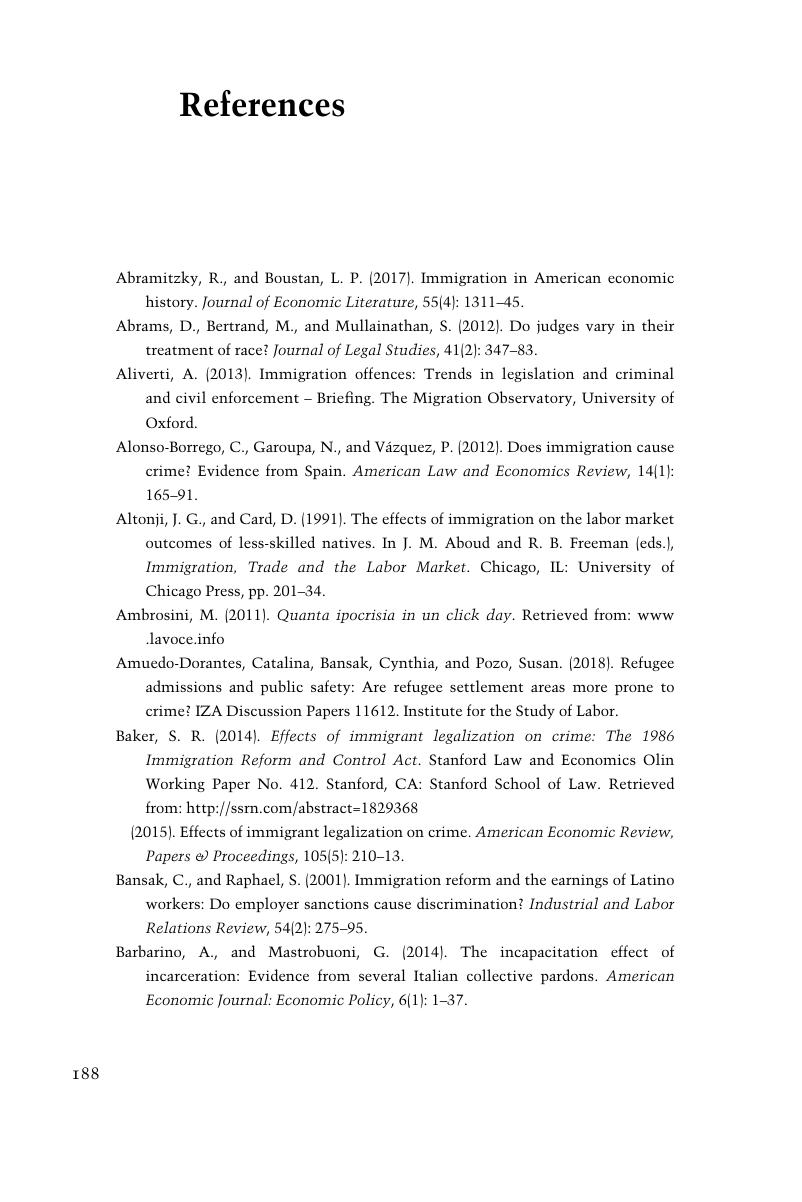Book contents
- Does Immigration Increase Crime?
- Does Immigration Increase Crime?
- Copyright page
- Contents
- Figures
- Tables
- Acknowledgements
- Introduction
- 1 Immigration and Crime: Perceptions and Reality
- 2 Migration Policy and Crime in Italy
- 3 Immigration and Crime in the United Kingdom
- 4 The Case of the United States
- 5 Refugee Waves and Crime: Evidence from EU Countries
- Conclusion
- Book part
- References
- Index
- References
References
Published online by Cambridge University Press: 15 August 2019
- Does Immigration Increase Crime?
- Does Immigration Increase Crime?
- Copyright page
- Contents
- Figures
- Tables
- Acknowledgements
- Introduction
- 1 Immigration and Crime: Perceptions and Reality
- 2 Migration Policy and Crime in Italy
- 3 Immigration and Crime in the United Kingdom
- 4 The Case of the United States
- 5 Refugee Waves and Crime: Evidence from EU Countries
- Conclusion
- Book part
- References
- Index
- References
Summary

Information
- Type
- Chapter
- Information
- Does Immigration Increase Crime?Migration Policy and the Creation of the Criminal Immigrant, pp. 188 - 197Publisher: Cambridge University PressPrint publication year: 2019
